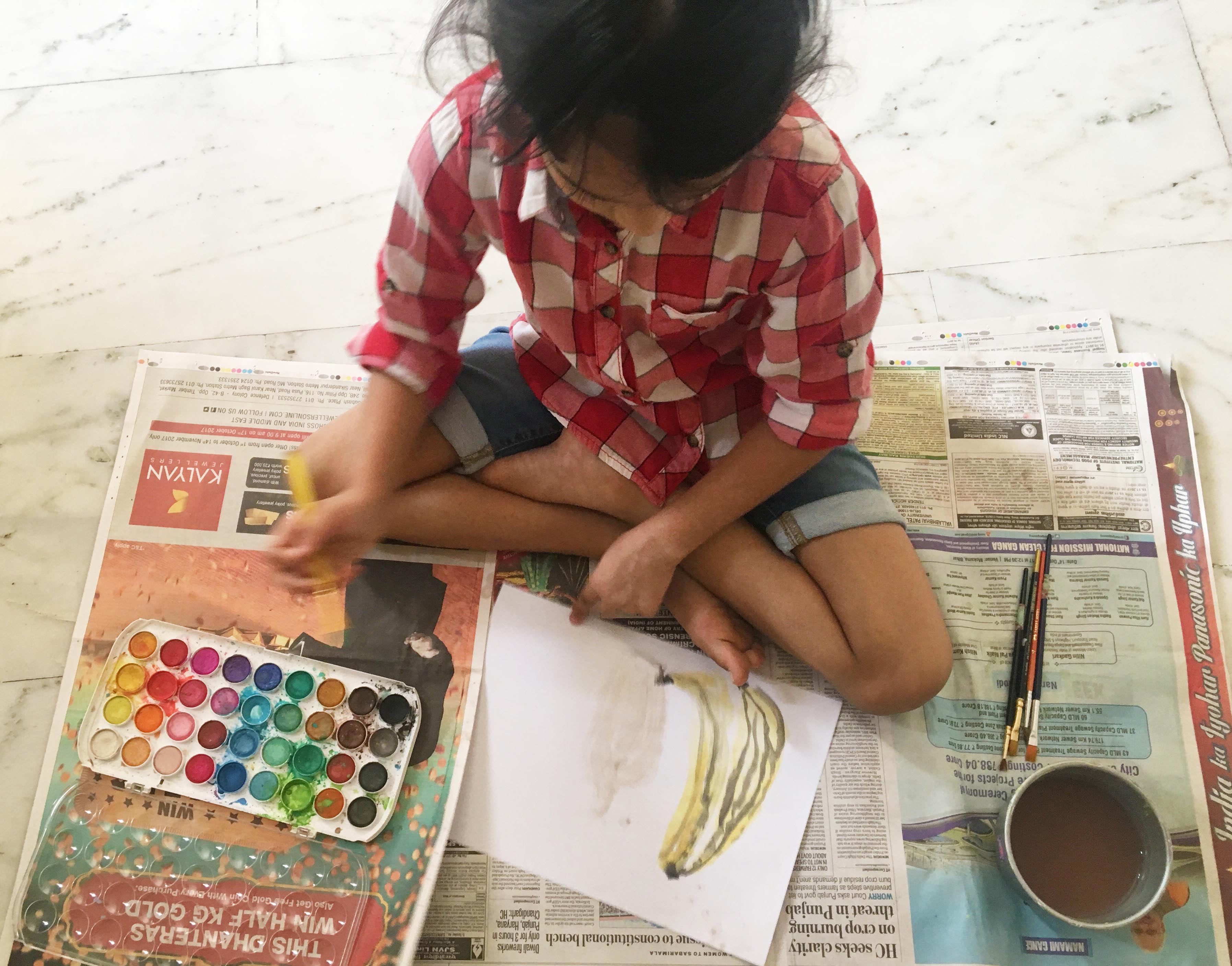
My younger daughter started going to ‘big’ school very early. She was one of the youngest in class, and in the initial days, she had a tough time keeping pace with the older kids. Very early in life, she had to learn that she had to work hard to get her school work right. There was only one thing that came easily to her – art. She could sit for hours, all by herself, drawing, colouring and painting. In fact, she came up with her own explanation for why she loved art so much. “Mamma,” she said, one day, when she was just four, “I love art, because there is no right or wrong in art.” It is a learning that has stayed with me since that day, that art tolerates – if fact, even celebrates – imperfections.
Children express themselves through art, long before they have learnt to write. Their pictures tell stories that they still cannot articulate in words. Much like the cave drawings of early humans told us how they hunted and lived, a child’s drawings too, give us crucial insights into how they relate to people and things around them. As soon as a child learns to depict recognisable shapes, they start drawing their parents, siblings, best friends, pets, favourite toys and favourite food. They use art to express their likes and dislikes.
Artwork has a crucial role to play in developing physical and cognitive skills in young children. Drawing, shaping clay, colouring insides lines help develop motor skills and hand-eye coordination. The ability to reproduce shapes that children encounter in the real physical world improves their spatial understanding and helps them to recognise and differentiate between things. In fact, studies have shown that children find it easier to name things that they draw. In other words, it helps them to remember new words and associations between them and improves their linguistic skills.
Sometimes, even very young children send out cries for help through their artwork – are they scared of something, are they being bullied or even being abused? Child psychologists are increasingly using art, not only to understand a child’s repressions, but also for therapeutic purposes. Psychologists believe art therapy is useful for everyone who doesn’t have the language to express what they are feeling inside. This includes not just children but adults, as well. Art therapists have developed tailor-made techniques to deal with specific emotional problems, using different media and artistic materials.
But, it is not just those with intense emotional and psychological problems who can use art as therapy. A Drexel University study (1) published in ‘Art Therapy’, the Journal of American Art Therapy Association, found that 45 minutes of creative activity significantly lessens stress in the body, by reducing cortisol levels. More importantly, the effects were positive even for those who had no skills or previous experience at art.
The study also found that younger people displayed a higher level of stress reduction after participating in art-related activities. Psychologists now believe that regular art-making can help students deal with the stresses and pressures of academic life, especially in high-school and universities. Psychologists say, younger people are under tremendous pressure to constantly achieve perfection and art allows them to take a break from that rat-race.
The search for perfection traps children from a very young age – they are expected to be perfectly behaved, perfect at academics, perfect at sports and perfect at playing the piano. Art gives our children the space to make beautiful mistakes and learn to embrace imperfections. That is why, it is a wonderful idea for children – and adults – to make art a part of their daily life. A great way to do this is to maintain art-journals. Draw something each day. It doesn’t have to be a masterpiece. Draw the book you are reading, or what you ate for lunch, illustrate the recipe for a cake, or even make a grumpy face. Anything to remind you of your day. Give art some time in your day and watch the stress melt away and bring a smile to your face. End Notes:
1. https://drexel.edu/now/archive/2016/June/Art_Hormone_Levels_Lower/ |










